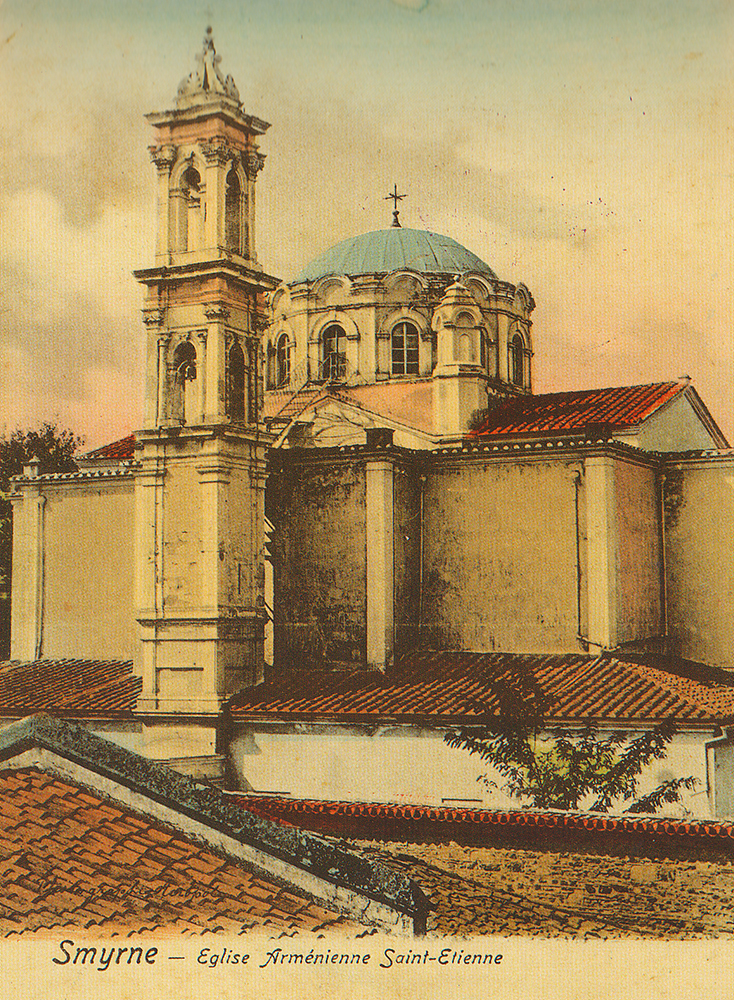15.09.2017

1922 Smyrna disaster was one of the last episodes of Armenian Genocide. During only several days the prosperous city known as the “East Star” for its beauty, stopped to exist. The city, which was once the place of Christianity in Asia Minor with an emphasized Christian character was called “Giavur Izmir” by Muslim population, remained only Turkish. The most part of the Christian civilians were massacred, and the buildings which belonged to them was set to fire and turned to ruins.
Armenians had many Christian and educational institutions in Smyrna. Saint Stephan church was unique for its architecture and luxury. The oldest scripts concerning the church are from the 17th century. The church is supposed to be built in the 16th century. Before the disaster of Smyrna in 1922 according to the inscription on marble stones around the main door of the church, the church was rattled from the 1688 earthquake and was rebuilt in 1689. The fire of 1845 caused great damage to Saint Stephan church. It was again renovated by Melqon Eramyan in 1853.
Saint Stephan church was one of the luxurious and biggest buildings of Smyrna. It had seven doors, and the main one was opened only on special occasions. The right side door was the one that was used every day, and was opened day and night for the believers. The church had a luxurious dome, golden altars, marble high cornerstone, high columns, and numerous windows. There were 10 marble and white columns, 5 columns from every side and they had 5.50 meter height without pedestal and capital. The area of the church had 33 meter height and 21 meter width. The main walls were 1 meter width. The marble stage had 1 meter height, and there were two stairs for getting there. The saint Stephan had 3 altars, which were very beautiful. The high altar was dedicated to Saint Stephan Protomartyr, the right one - to St. John the Baptist, and the left altar - to St. Maria. The wooden doors from the right and left sides linked the two little temples from both sides to the church. The right temple was dedicated to St. Bartholomew, and the left one - to St. John the Baptist (St. Glxadir). The interior of the temples was very simple, they were painted with a white paint, and in the eastern walls was an altar with two columns. In St. John the Baptist temple was a cross stone brought from Ani in 1892.
Bell tower with two bells had a square shape, and was higher than the dome and the whole church. Besides, there was a well in the yard of the church, and not only Armenians but also Greeks and Turks used the water of that well. A cross stone was on the stairs leading to the well.
Strati is the first architect of the church, who laid its foundation and begun the construction. But the National Department dissatisfied by his work, handed the construction of the church to an architect named Simon Kesaratsi. After a while he refused to continue the work. The Armenians of Smyrna referred to an architect from Constantinople, Yorteq Minas, to bring the construction to an end. As the latter couldn’t come, he sent Melqon Yeramyan who finished the construction of the church.
The garden of Saint Stephan church was used as a graveyard, where tombstones saved till the 20th century gave a lot of information about the Armenians living there. The old tombstones were of the 16th century.
This important religious and cultural center of the Smyrna Armenians also disappeared after the disaster of September 1922.





